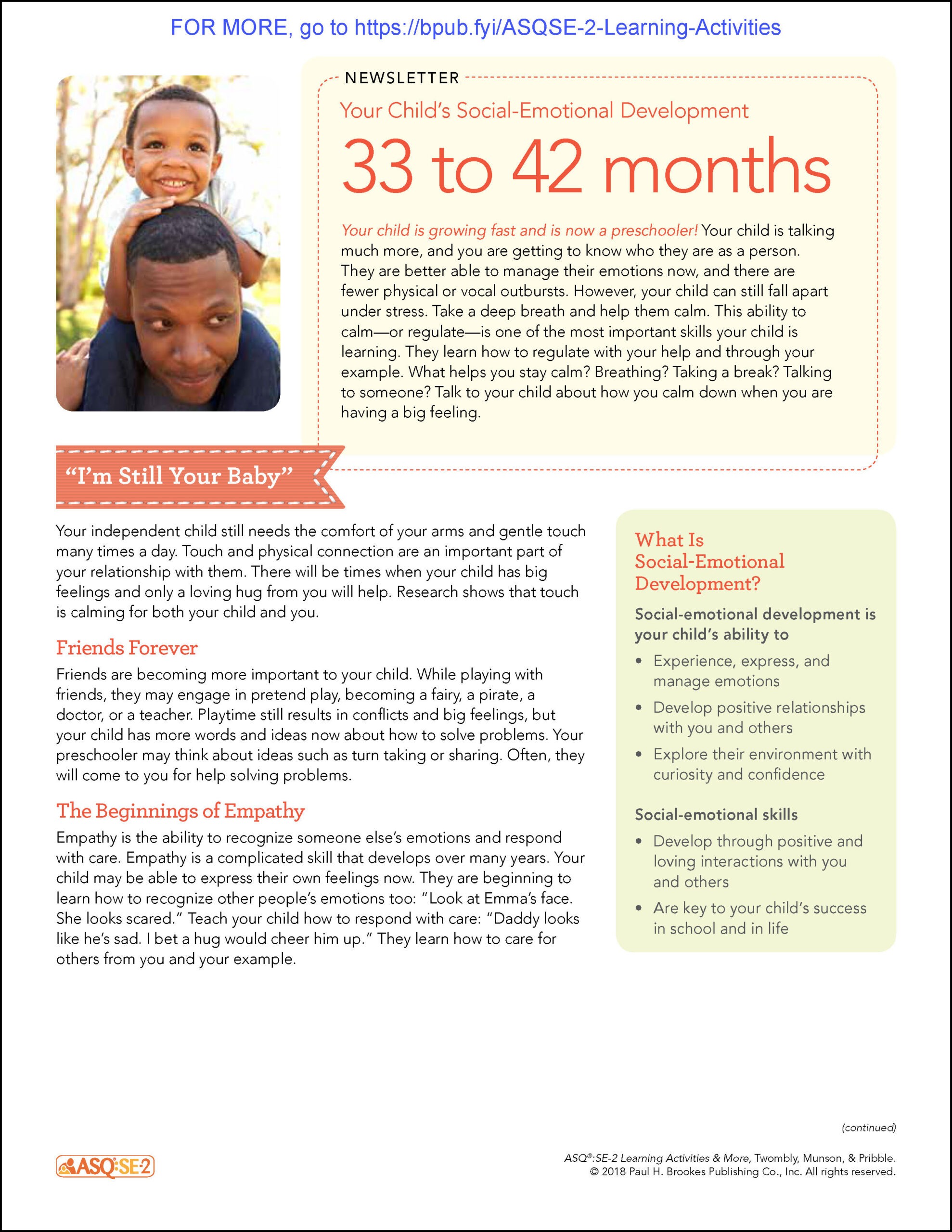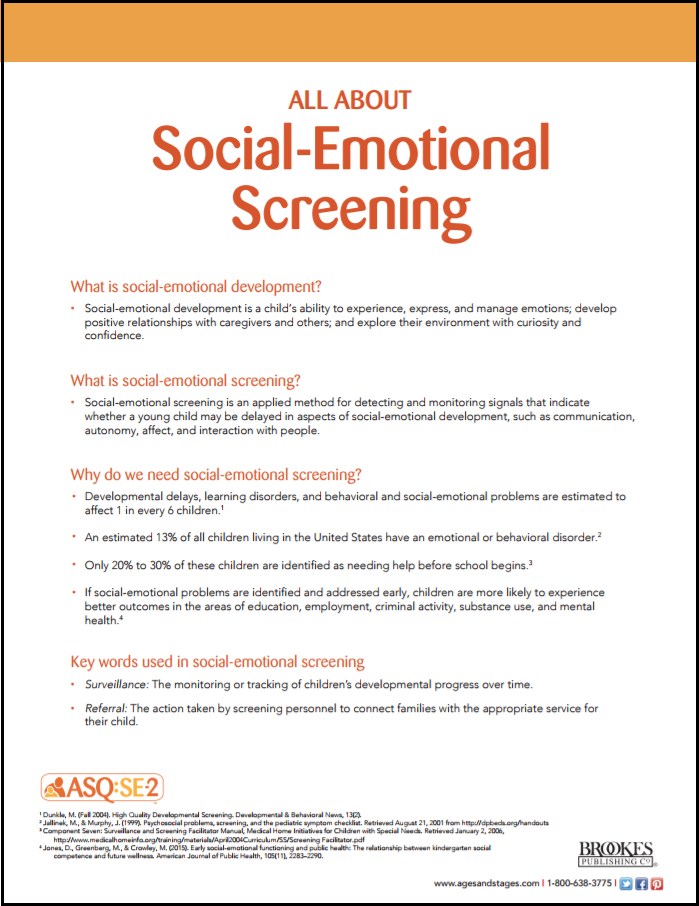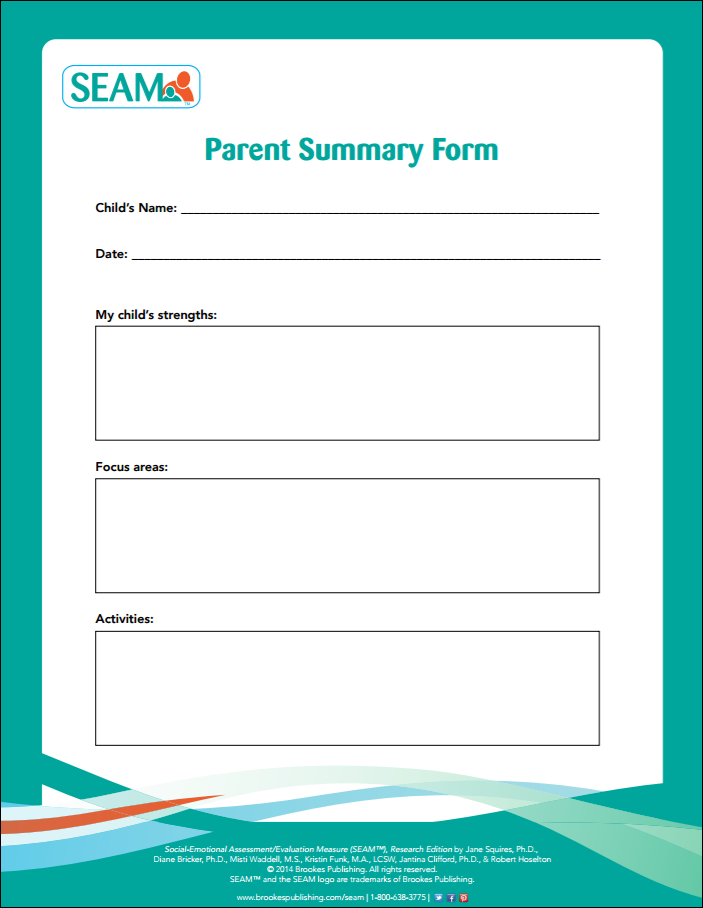bar
Children’s ability to regulate their emotions and skillfully manage social interactions is critical to their healthy development and future success. Use this infographic as a guide to help encourage and support your infant’s social-emotional development. Read More

Children’s ability to regulate their emotions and skillfully manage social interactions is critical to their healthy development and future success. Use this infographic as a guide to help encourage and support your toddler’s social-emotional development. Read More

What are the best ways to get the word out about your screening initiative? Hear from three program leaders who have expanded their reach using a range of promotional tactics. Read More
Explain key social-emotional milestones to parents, share practical tips, and offer warm words of wisdom with this sample parent newsletter. ASQ:SE-2 Learning Activities are perfect for sharing with parents of children who are developing typically or need non-intensive support with their social-emotional skills. Read More

Not all parents or caregivers may be familiar with social-emotional screening. This handout answers the ‘what’ and ‘why’ about the importance of social-emotional screening. Read More

Visit the Milestones in Action webpage from the Centers for Disease Control and Prevention (CDC) to access a free library of photos and videos of developmental milestones. Read More
Discussing ASQ-3 and ASQ:SE-2 results can be a challenge, especially if there are areas of concern. Ensure families get the answers, support, and referrals they need with these tips for more productive parent meetings. Read More
This policy statement from the U.S. Departments of Health and Human Services (HHS) and Education (ED) provides recommendations to early childhood systems and programs on family engagement. Developing family and professional relationships linked to learning, development, and wellness is one of the listed practices. Developmental screenings that include parental perspectives help to… Read More
Share this form with caregivers before reviewing SEAM results to help engage families in the process of identifying strengths, identifying areas to focus on, and sharing ideas and activities that can support the development of the identified skill. Read More

SEAM assesses children’s social and emotional development, and can evaluate a caregiver’s readiness for providing ongoing support. But the tool’s success relies heavily on caregiver involvement and interest. Use these tips to help your program engage better with families, for better child outcomes. Read More






